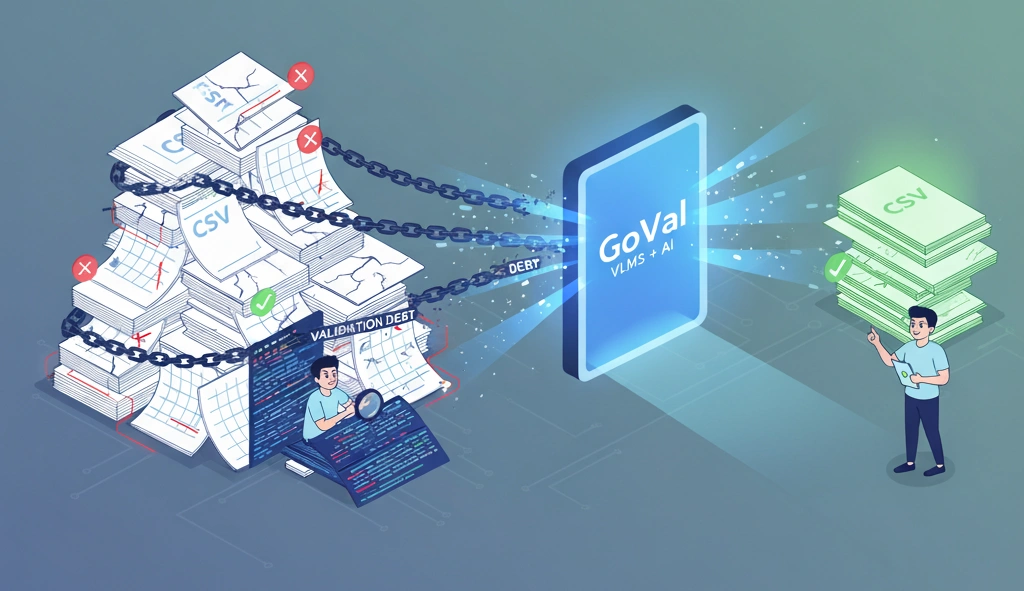Validation debt is the backlog of work you owe to keep systems demonstrably in a validated state. It accumulates when changes outpace validation, leaving gaps in traceability, testing, evidence, signatures, and reviews. GoVal eliminates this debt by automating traceability, evidence capture, signature gating, and risk-based testing from URS/FS/DS—so debt doesn’t re-accumulate after each release.
What is validation debt (in CSV)?
Validation debt is the growing backlog of validation activities and artifacts required to prove your computerized systems remain validated. Typical symptoms:
- Outdated URS/FS/DS
- Incomplete RTM
- Unsigned IQ/OQ/PQ
- Missing evidence
- Unmanaged change impact
- Overdue periodic reviews
- Weak Part 11/Annex 11 controls
Why it accumulates
- Releases/patches shipped without impact assessment or re-validation
- Treating validation as a one-time project vs. a lifecycle
- Under-resourced teams and manual spreadsheets
- Vendor updates, data migrations, or SOP drift that outpace documentation
Why it matters
- Inspection risk and costly remediation
- Slower releases, last-minute audit scrambles
- Data-integrity exposure and low confidence in records
New to VLMS? See our overview of a Validation Lifecycle Management System (VLMS) and how it standardizes URS, FS/DS, IQ/OQ/PQ reports with full traceability.
KPIs to quantify your validation debt
- RTM coverage: % requirements bi-directionally linked to tests & evidence
- Execution quality: % test steps with e-signatures and attached raw data
- Change hygiene: % changes with impact assessment & completed re-validation
- Lifecycle health: overdue periodic reviews; deviation/CAPA age & volume
- Control coverage: Part 11/Annex 11 (e-records, e-sigs, access, audit trail) configured and verified
How GoVal eliminates validation debt (and prevents its return)
1) End-to-end traceability (auto-generated & maintained)
A dynamic RTM connects requirements → risks → tests (IQ/OQ/PQ) → evidence → deviations/CAPA → reports. Gaps are flagged in real time; version-aware links survive changes and releases.
2) Evidence capture that satisfies ALCOA+ and audits
GoVal enforces mandatory evidence (files, data, reviewer notes) at the step level. Timestamps, user attribution, and secured storage preserve integrity—no loose spreadsheets.
3) Signature gating & controlled approvals
Electronic records & signatures, role-based access, and review checkpoints align to 21 CFR Part 11 and EU Annex 11. Gates prevent progression until required reviews and closures (e.g., deviations) are complete.
4) AI-assisted, risk-based tests from URS/FS/DS (CSV → CSA)
GoVal AI analyzes specifications to highlight risks and propose right-sized protocols and scenario-based tests. You get less script bloat and more coverage where it matters, supporting a shift from CSV to CSA.
5) Change control with impact analysis & auto-regression
When a change lands, GoVal pinpoints impacted requirements/tests and proposes the minimal re-validation needed. Triggers for re-qualification are built into templates.
6) Periodic review & supplier oversight on schedule
Calendars, reminders, and dashboards make periodic review and supplier assessment routine—preventing drift from the validated state.
7) Inspection-ready reporting (no manual compile)
One-click Validation Plan/Report, Traceability Matrix, Execution Summaries, VSR, and Release Certificates pull signed records directly from the VLMS.
| Debt driver (gap) | GoVal control |
|---|---|
| Missing or stale RTM | Auto-generated traceability with gap detection & alerts |
| Evidence not attached/verifiable | Mandatory evidence, timestamps, attribution, secured storage |
| Unsigned or late reviews | Signature gates, role workflows, reminders |
| Bloated/misaligned scripts | AI risk-based test generation; templates; CSA practices |
| Unmanaged change impact | Impact analysis, auto-regression selection, re-qualification triggers |
| Overdue periodic reviews | Calendars, dashboards, reminders, reportable KPIs |
| Report assembly crunch | One-click reports with signed records & evidence |
Example flow: from spec to release (no new debt)
- Author & ingest: URS/FS/DS authored or imported into GoVal
- AI analysis: risk drivers & candidate test sets proposed
- Design & risk sign-off: signature gates unblock protocol finalization
- Execute: step-level evidence and deviations captured; e-signatures applied
- Change control: minimal re-validation suggested by impact
- Periodic review: scheduled checks keep state validated
- Report & release: VSR/summary generated from signed data; release gates pass
FAQs
What exactly is validation debt?
It’s the backlog of validation work—docs, tests, evidence, signatures, and reviews—required to keep systems demonstrably in a validated state.
How does GoVal reduce validation debt quickly?
By automating traceability (RTM), enforcing evidence & e-signatures, introducing signature gates, and generating risk-based tests from URS/FS/DS so each release stays compliant.
Is GoVal aligned with Part 11/Annex 11?
Yes. GoVal supports electronic records & signatures, access controls, versioning, and complete audit trails aligned with 21 CFR Part 11 and EU Annex 11.
Do you have real-world results?
See our Customer Stories—teams report faster approvals, fuller traceability, and inspection-ready documentation.
